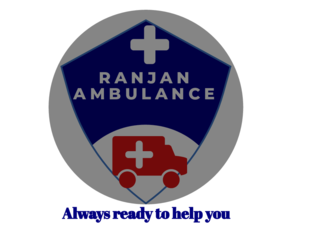
Ambulance Service in Kishanganj: Facilitating Critical Medical Care
Introduction
In the northeastern part of Bihar, Kishanganj district stands as a crucial hub where ambulance services play a pivotal role in ensuring prompt medical assistance to its residents. This article explores the operations, challenges, and impact of ambulance services in Kishanganj, shedding light on their significance in the healthcare ecosystem of the region.
Overview of Ambulance Services
Ambulance services in Kishanganj are primarily managed by a combination of government agencies, private hospitals, and non-governmental organizations. These services are essential for transporting patients during medical emergencies, providing a lifeline especially in remote and underserved areas of the district. The types of ambulances available vary in their capabilities and resources:
Types of Ambulances
Government Ambulances: These ambulances are operated by the district administration and are stationed at key locations such as the district hospital, primary health centers (PHCs), and community health centers (CHCs). They are typically equipped with basic medical supplies and staffed with paramedics trained to handle emergencies.
Private Ambulances: Managed by private hospitals and NGOs, these ambulances may vary from basic transport vehicles to those equipped with advanced life support systems (ALS). Private ambulances often cater to specific medical needs and may provide quicker response times depending on the provider’s infrastructure.
Operational Challenges
Despite their critical role, ambulance services in Kishanganj encounter several challenges that impact their efficiency and effectiveness:
Infrastructure and Road Conditions: Many areas of Kishanganj have underdeveloped or poorly maintained roads, especially in rural and hilly terrain. During monsoon seasons, these conditions can significantly impede ambulance access and response times.
Resource Allocation: Limited funding often restricts the number of ambulances available and their operational capabilities. This can lead to delays in responding to emergencies, particularly during peak hours.
Staffing and Training: Paramedics and drivers require specialized training to handle medical emergencies effectively. However, the availability of trained personnel can be limited, affecting the quality of care provided during transit.
Impact on Healthcare Access
Despite these challenges, ambulance services in Kishanganj have a profound impact on healthcare access and outcomes:
Emergency Response: Ambulances ensure timely transportation of patients to healthcare facilities, reducing mortality rates associated with delayed medical care.
Maternal and Child Health: In rural areas, ambulances are instrumental in transporting pregnant women to hospitals for safe delivery, thereby contributing to the reduction of maternal and infant mortality rates.
Trauma and Accident Care: Ambulance services play a critical role in responding to accidents and trauma cases, providing crucial medical interventions during transit to improve patient outcomes.
Case Studies
To illustrate the significance of ambulance services in Kishanganj, consider the following scenarios:
Road Accident: An ambulance swiftly reached the site of a road accident in a remote village, providing immediate medical care to injured individuals and transporting them to a hospital for further treatment.
Emergency Childbirth: A pregnant woman in labor was transported by ambulance from her village to a hospital, where she safely delivered her baby with the assistance of medical professionals onboard.
Cardiac Emergency: A patient experiencing a heart attack received timely medical intervention in transit to a hospital equipped to handle cardiac emergencies, thanks to the advanced life support systems available in the ambulance.
Improving Ambulance Services
To enhance ambulance services in Kishanganj, several measures can be considered:
Infrastructure Development: Improving road networks and infrastructure in rural and hilly areas can facilitate quicker ambulance access and reduce travel times during emergencies.
Capacity Building: Continuous training programs for paramedics and drivers can enhance their skills in handling diverse medical emergencies effectively.
Technology Integration: Implementing GPS tracking and communication systems in ambulances can improve coordination, route optimization, and response times during emergencies.
Public Awareness Campaigns: Educating the community about the importance of timely medical intervention and how to access ambulance services can encourage prompt reporting of emergencies and improve overall healthcare outcomes.
Conclusion
Ambulance services in Kishanganj are indispensable for providing timely medical care and improving healthcare accessibility, despite facing various challenges. By addressing these challenges through strategic investments in infrastructure, capacity building, and technology, the district can further enhance its emergency medical services. The impact of efficient ambulance services extends beyond saving lives; it contributes to a healthier community by ensuring that healthcare services reach those who need them most. As Kishanganj continues to develop and prioritize healthcare infrastructure, the role of ambulance services will remain pivotal in shaping the district’s healthcare landscape for the better.
